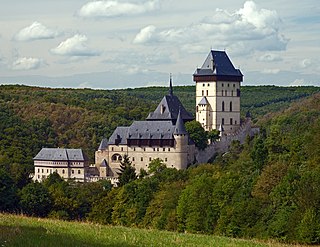
Bohemia is the westernmost and largest historical region of the Czech Republic. Bohemia can also refer to a wider area consisting of the historical Lands of the Bohemian Crown ruled by the Bohemian kings, including Moravia and Czech Silesia, in which case the smaller region is referred to as Bohemia proper as a means of distinction.
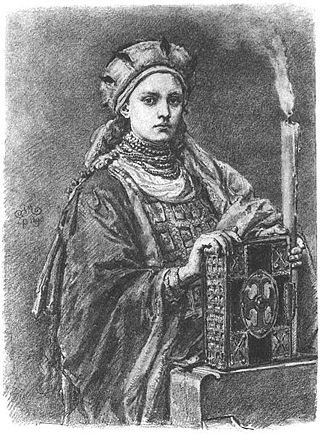
Doubravka of Bohemia, Dobrawa was a Bohemian princess of the Přemyslid dynasty and by marriage Duchess of the Polans.

Mieszko I was Duke of Poland from 960 until his death in 992 and the founder of the first unified Polish state, the Civitas Schinesghe. A member of the Piast dynasty, he was the first Christian ruler of Poland and continued the policies of both his father Siemomysł and grandfather Lestek, who initiated a process of unification among the Polish tribes and the creation of statehood.
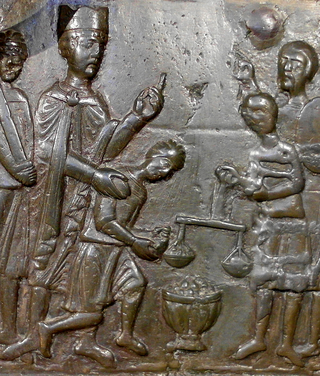
Bolesław I the Brave, less often known as Bolesław the Great, was Duke of Poland from 992 to 1025, and the first King of Poland in 1025. He was also Duke of Bohemia between 1003 and 1004 as Boleslaus IV. A member of the Piast dynasty, Bolesław was a capable monarch and a strong mediator in Central European affairs. He continued to proselytise Western Christianity among his subjects and raised Poland to the rank of a kingdom, thus becoming the first Polish ruler to hold the title of rex, Latin for king.

Boleslaus I, a member of the Přemyslid dynasty, was ruler of the Duchy of Bohemia from 935 until his death in 972. He is notorious for the murder of his elder brother Wenceslaus, through which he became duke.

The Duchy of Bohemia, also later referred to in English as the Czech Duchy, was a monarchy and a principality of the Holy Roman Empire in Central Europe during the Early and High Middle Ages. It was formed around 870 by Czechs as part of the Great Moravian realm. Bohemia separated from disintegrating Great Moravia after Duke Spytihněv swore fealty to the East Frankish king Arnulf in 895.

Boleslaus II the Pious, a member of the Přemyslid dynasty, was Duke of Bohemia from 972 until his death in 999.

Boleslaus III, called the Red or the Blind, a member of the Přemyslid dynasty, was Duke of Bohemia from 999 until 1002 and briefly again during the year 1003. During his chaotic reign, Bohemia became a pawn in the long German–Polish War between King Henry II and Duke Bolesław I, "the Brave", of Poland.

Jaromír, a member of the Přemyslid dynasty, was Duke of Bohemia in 1003, from 1004 to 1012, and again from 1034 to 1035.
Vladivoj was Duke of Bohemia from 1002 until his death.
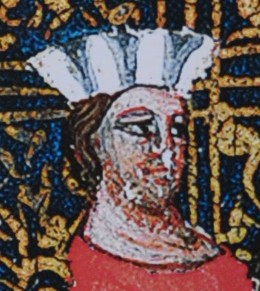
Oldřich, a member of the Přemyslid dynasty, was Duke of Bohemia from 1012 to 1033 and briefly again in 1034. His accession to the Bohemian throne marked the start of a phase of stability after a long period of internal dynastic struggles. Under his rule, the Moravian lands were reconquered from Polish occupation.
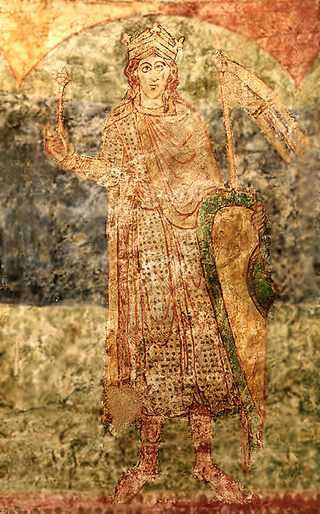
Vratislaus II, the son of Bretislaus I and Judith of Schweinfurt, was the first King of Bohemia as of 15 June 1085, his royal title granted as a lifetime honorific from Holy Roman Emperor Henry IV that did not establish a hereditary monarchy. Before his elevation to the royal dignity, Vratislaus had ruled Bohemia as duke since 1061.
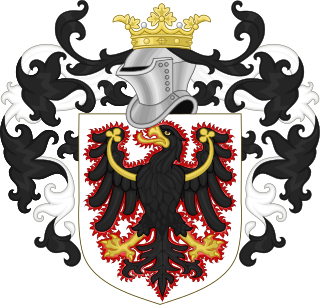
The Přemyslid dynasty or House of Přemysl was a Bohemian royal dynasty that reigned in the Duchy of Bohemia and later Kingdom of Bohemia and Margraviate of Moravia, as well as in parts of Poland, Hungary and Austria.

The Slavniks/Slavníks or Slavnikids was a dynasty in the Duchy of Bohemia during the 10th century. It is considered to be of White Croat origin. The center of the semi-independent principality was the gord of Libice located at the confluence of the rivers Cidlina and Elbe. The Slavníks competed with the Přemyslid dynasty for control over Bohemia and eventually succumbed to them.
Emma of Italy was Queen of Western Francia as the wife of King Lothair, whom she married in 965. Their son, Louis V, was the last Carolingian king.

Emma (Hemma) (bef. 950 – 1005/06) was a Bohemian duchess consort as the second wife of Boleslaus II of Bohemia.
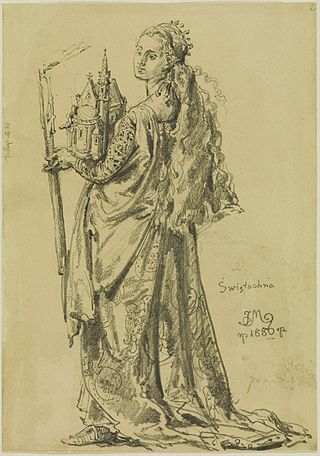
Świętosława of Poland was the third wife of Duke Vratislaus II of Bohemia and the first Queen of Bohemia as of 1085.

Kunigunde of Bohemia was the eldest daughter of Ottokar II of Bohemia and his second wife, Kunigunda of Slavonia. She was a member of the Přemyslid dynasty. She was Princess of Masovia by her marriage to Boleslaus II of Masovia and later became abbess of the St. George's Convent at Prague Castle.

The German–Polish War consisted of a series of struggles in 1003–1018, between the Ottonian king Henry II of Germany and the Polish Piast ruler Bolesław I the Brave. The locus of conflict was the control of Lusatia, Upper Lusatia, as well as Bohemia, Moravia and Slovakia. The fighting ended with the Peace of Bautzen in 1018, which left Lusatia and Upper Lusatia as a fief of Poland, and Bohemia became a duchy in the Holy Roman Empire.

















